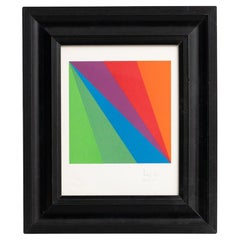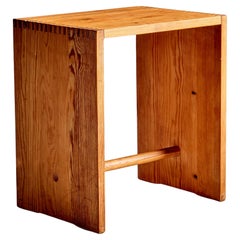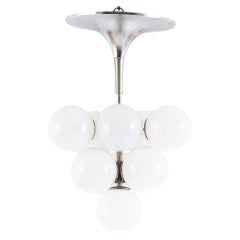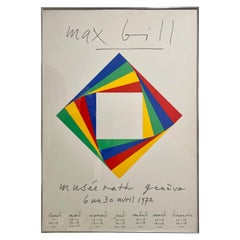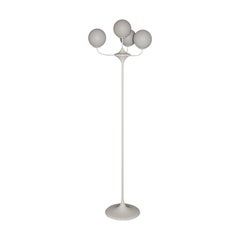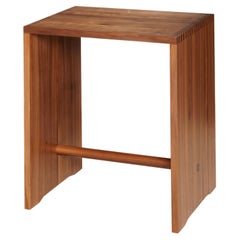Max Bill
Max Bill was born in Winterthur, Switzerland. After an apprenticeship as a silversmith during 1924–27, he took up studies at the Bauhaus in Dessau under many teachers including Wassily Kandinsky, Paul Klee and Oskar Schlemmer from 1927 to 1929, after which he moved to Zurich.
After working on graphic designs for the few modern buildings being constructed, Bill built his first work, his own house and studio (1932–3) in Zurich-Höngg. From 1937 onward he was a prime mover behind the Allianz group of Swiss artists.
Bill is widely considered the single most decisive influence on Swiss graphic design beginning in the 1950s with his theoretical writing and progressive work. His connection to the days of modernism gave him special authority. As an industrial designer, his work is characterized by a clarity of design and precise proportions. Examples are the elegant clocks and watches designed for Junghans, a long-term client. Among Bill's most notable product designs is the Ulmer Hocker of 1954, a stool that can also be used as a shelf element, a speaker's desk, a tablet or a side table. Although the stool was a creation of both Bill's and Ulm School designer Hans Gugelot's, it is often called "Bill Hocker" because the first sketch of it on a cocktail napkin was Bill's work.
As a designer and artist, Bill sought to create forms which visually represent the New Physics of the early 20th century. He sought to create objects so that the new science of form could be understood by the senses: that is as a concrete art. Thus Bill is not a rationalist – as is typically thought – but rather a phenomenologist. He made spare geometric paintings, prints and spherical sculptures, some based on the Möbius strip, in stone, wood, metal and plaster. His architectural work included an office building in Germany, a radio studio in Zurich, and a bridge in eastern Switzerland.
Bill continued to produce architectural designs, such as those for a museum of contemporary art (1981) in Florence and for the Bauhaus Archive (1987) in Berlin. In 1982 he also entered a competition for an addition to the Neue Nationalgalerie in Berlin, built to a design by Ludwig Mies van der Rohe. Pavillon-Skulptur, a large granite sculpture, was installed adjacent to the Bahnhofstrasse, Zürich in 1983. As is often the case with modern art in public places, the installation generated some controversy. Endlose Treppe, a sculpture made of North American granite, was designed for the philosopher Ernst Bloch.
In 1982 he was awarded the Sir Misha Black award and was added to the College of Medallists.
Bill executed many public sculptures in Europe and exhibited extensively in galleries and museums, including a retrospective at the Kunsthaus Zürich in 1968–69. He was the subject of retrospectives at the Albright-Knox Art Gallery in Buffalo and the Los Angeles County Museum of Art in 1974, and the Solomon R. Guggenheim Museum in New York City in 1988.
Find vintage Max Bill stools, lighting, and other furniture on 1stDibs.
| Average Sold Price |
| $1,547 |
| Styles |
| Materials |
| Related Creators |
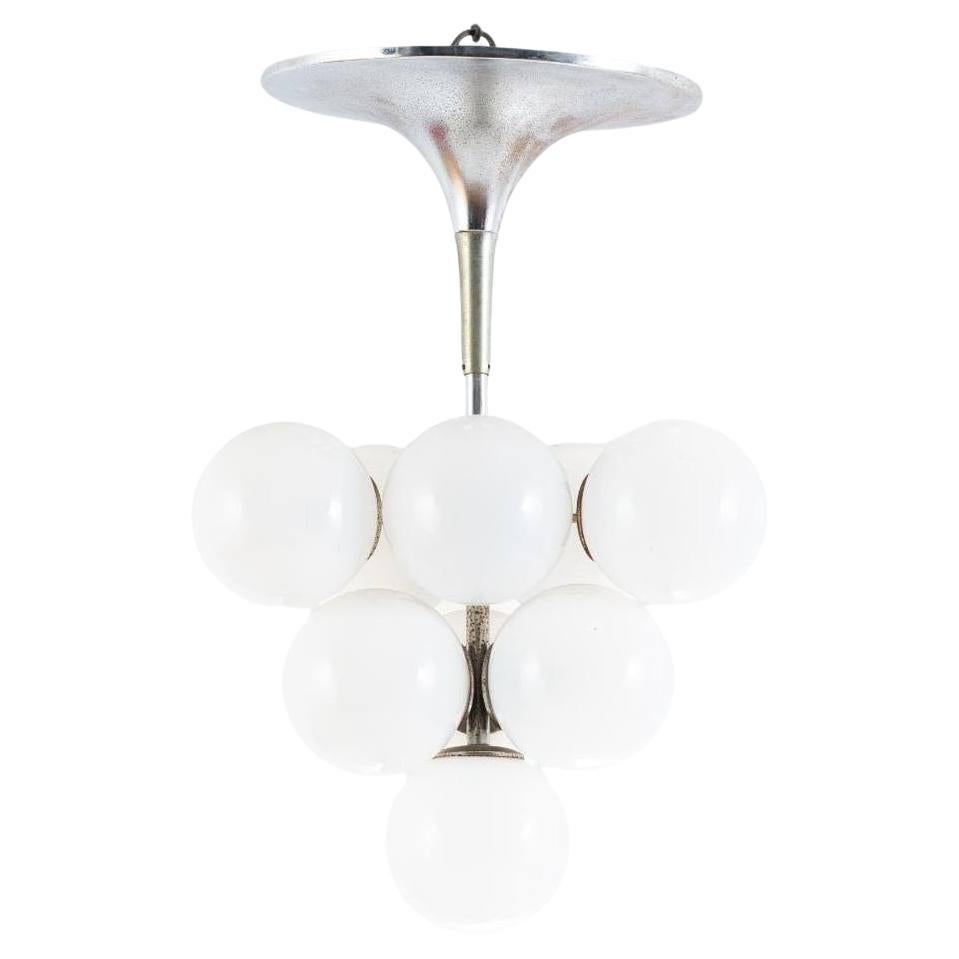
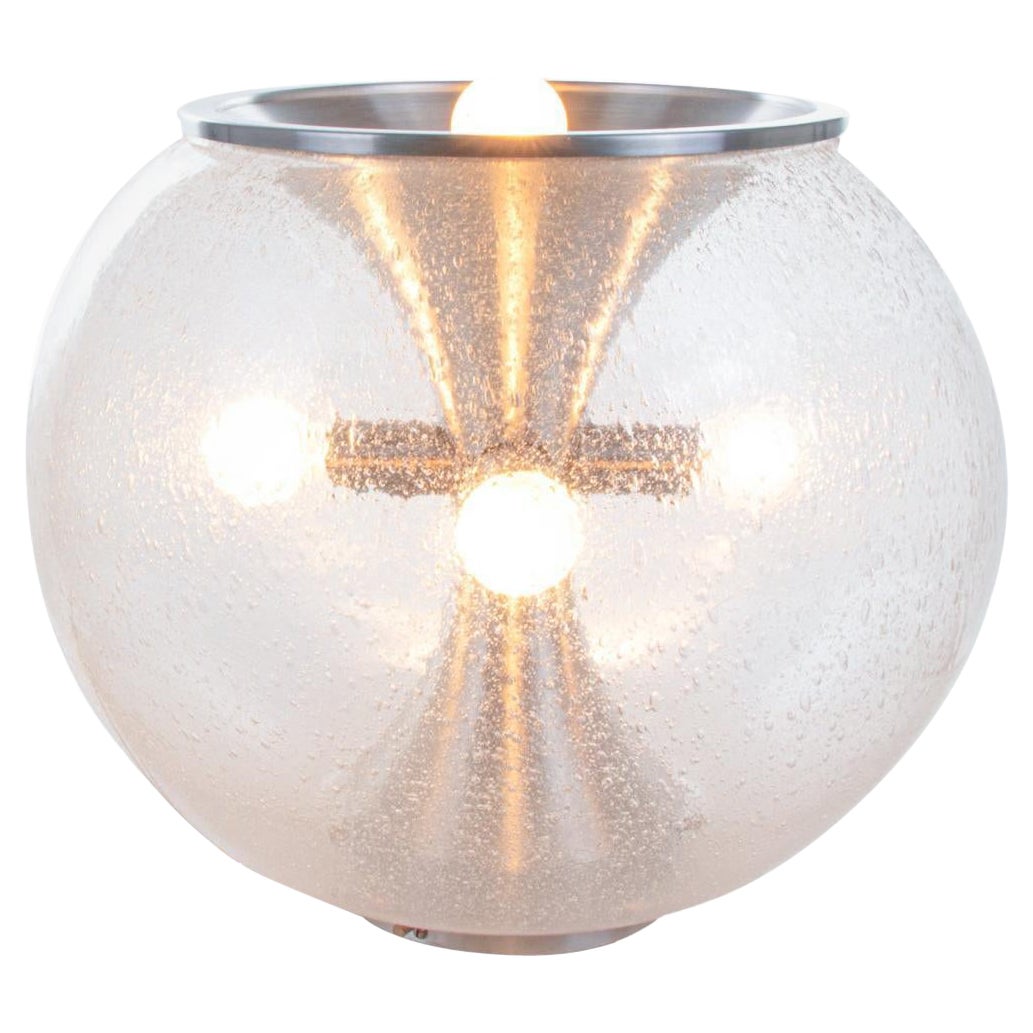
1960s German Space Age Vintage Max Bill
Metal
1950s German Mid-Century Modern Vintage Max Bill
Porcelain
1970s European Mid-Century Modern Vintage Max Bill
Paper
Mid-20th Century German Mid-Century Modern Max Bill
Spruce
20th Century Italian Mid-Century Modern Max Bill
Metal, Chrome
1970s French Mid-Century Modern Vintage Max Bill
Aluminum
1960s Swiss Vintage Max Bill
Metal
Mid-20th Century German Mid-Century Modern Max Bill
Nutwood
Max Bill Sale Prices
| Sold Date | Sold Price | Category | Material | Creation Year | ||||||||||||||||||||||||||||||||||||
|
| $1,547 |
Average sold price of items in the past 12 months |
| $199-$4,437 |
| Sold price range of items in the past 12 months |
Creators Similar to Max Bill


Max Bill furniture for sale on 1stDibs.
- What did Max Bill create?1 Answer1stDibs ExpertMarch 22, 2022Max Bill created many types of items during his career. The Swiss artist worked as a graphic designer creating many compositions indicative of the modern style of the time. In addition, he was an industrial designer who made a variety of decorative objects and furnishings. He is best known for the clocks produced for Junghans, the Ulmer Hocker stool, the Atomic chandelier and the Tulip floor lamp. On 1stDibs, shop a variety of Max Bill art, furniture and decorative objects.


